Curating culture:
Beyond the carnival parade
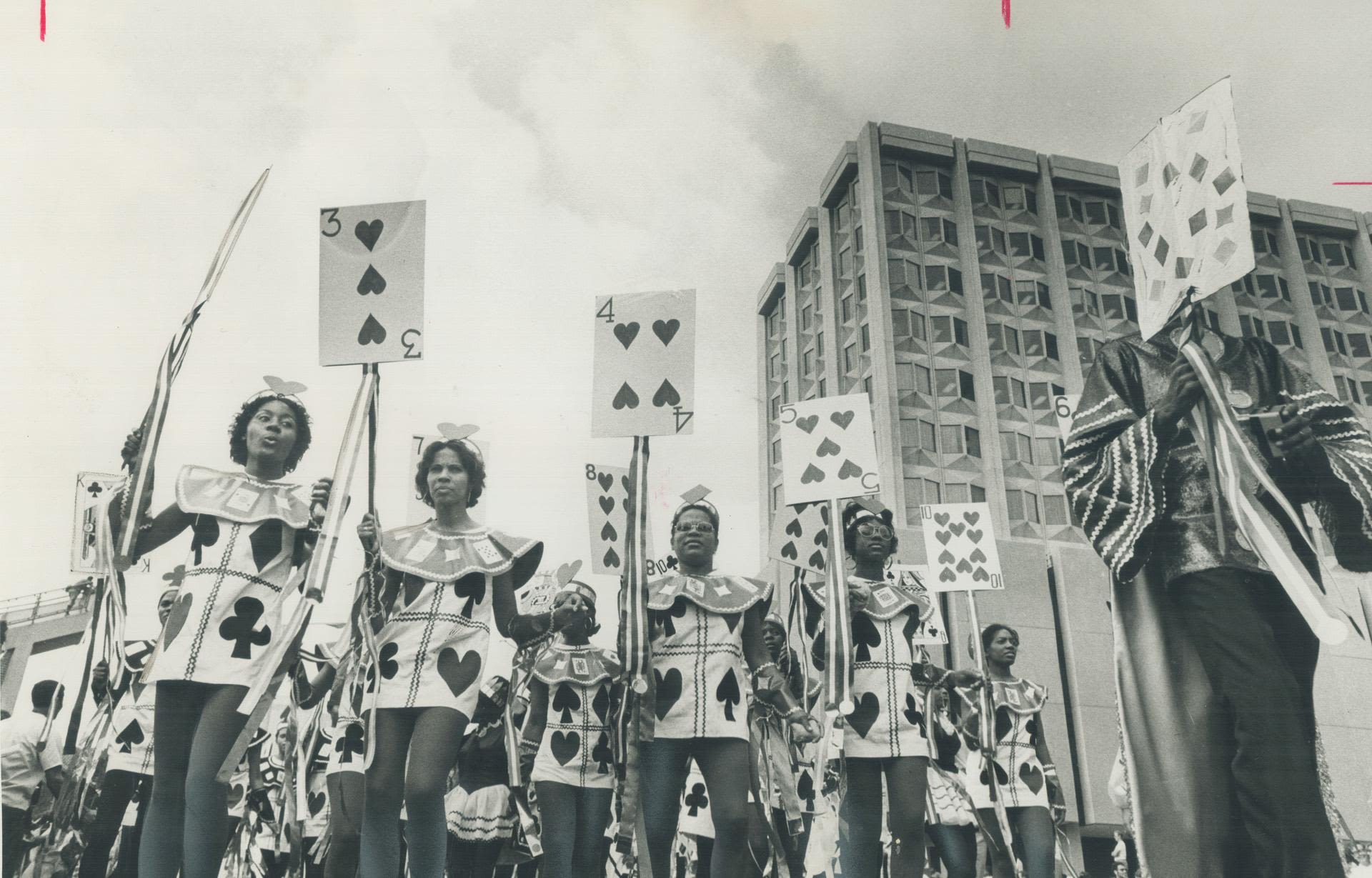
the sound of people singing, steelpan, drums, guitar, and a heavy bass alerted my then six-year-old self for the first time of the festivities to come. Sequins, sparkles, feathers, and rhinestones all glittered in the sun, each material meticulously used to create vibrant carnival costumes by Trinidad and Tobago’s most creative individuals. This is Caribana. But there’s a lot more to it than just the party.
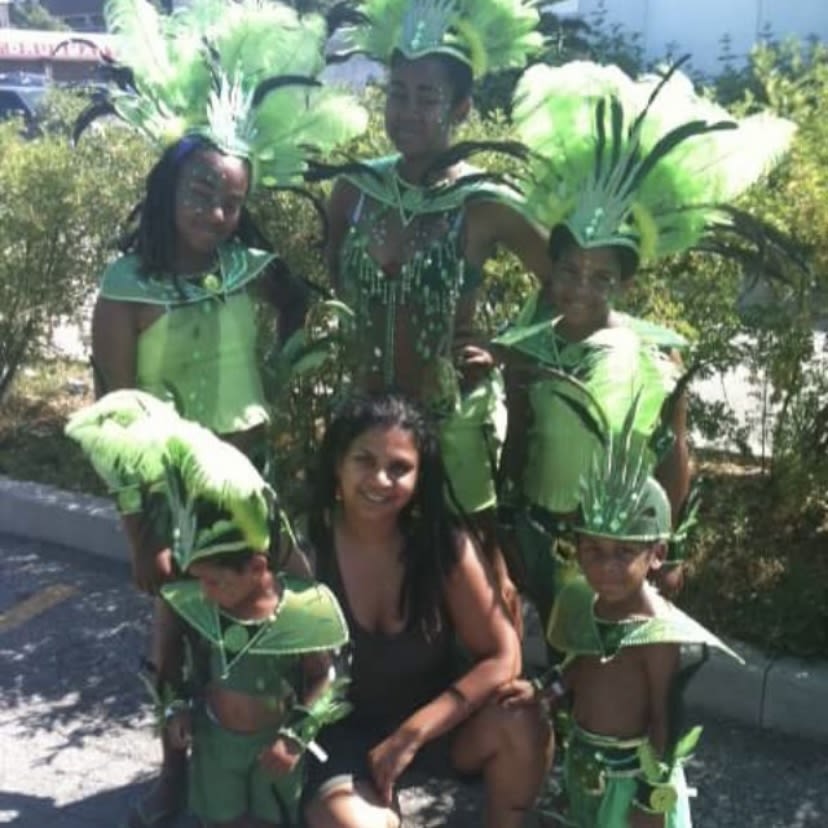
The Lochan family posing for a picture in their kiddies carnival costumes on July. 31, 2010. (Masahda Lochan-Aristide/TMU)
The Lochan family posing for a picture in their kiddies carnival costumes on July. 31, 2010. (Masahda Lochan-Aristide/TMU)
Since 1960 Toronto has hosted one of the biggest cultural festivals in North America, giving anyone who attends a front row seat to observe creativity and culture at its finest. However, beyond the parade there are months of intensive work and generations of history and culture embedded in every crystal, feather and rhinestone used.
“We move through the streets because at one point we weren’t allowed to. We couldn’t walk freely down the street much less dance. That is what we are celebrating, being alive and free,” said Mischka Chrichton, festival manager for the Festival Management Committee (FMC).
Let’s dive into this world of creativity, where Caribbean creatives use their heritage to cultivate culture through drag, street wear, and social media content creation. From the new generation of carnival creators to the old generation, the innovation is weaved throughout the city, expanding past the weekend long festival and into a yearlong celebration of culture and history.
“What matters is the continuation of the culture, my passion is educating people on what carnival is, making sure that it's still around for the next generation to enjoy just like I have for the past 24 years of my life, “ said Celena Seusahai, the youngest Mas band leader in Toronto of Tribal Carnival and CEO of Cee the Collection.
For many like myself of Caribbean descent, my experience with carnival began at a young age with Kiddies Carnival where I spent from ages 6-14 in costume. This exposure to the culture from such a young age allowed me to feel as though I could relate to my family back in Trinidad who always spoke of the vibrancy of their carnival. As I grew out of the Kiddies costumes and moved on to Caribana, I remember it feeling like a rite of passage to further integrate myself into my culture.
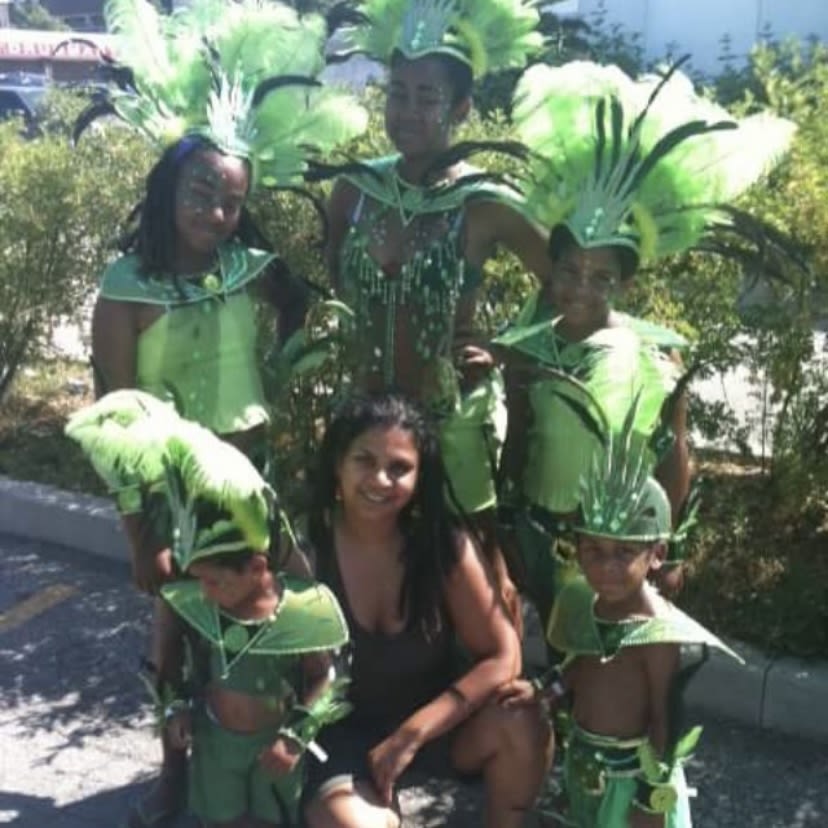
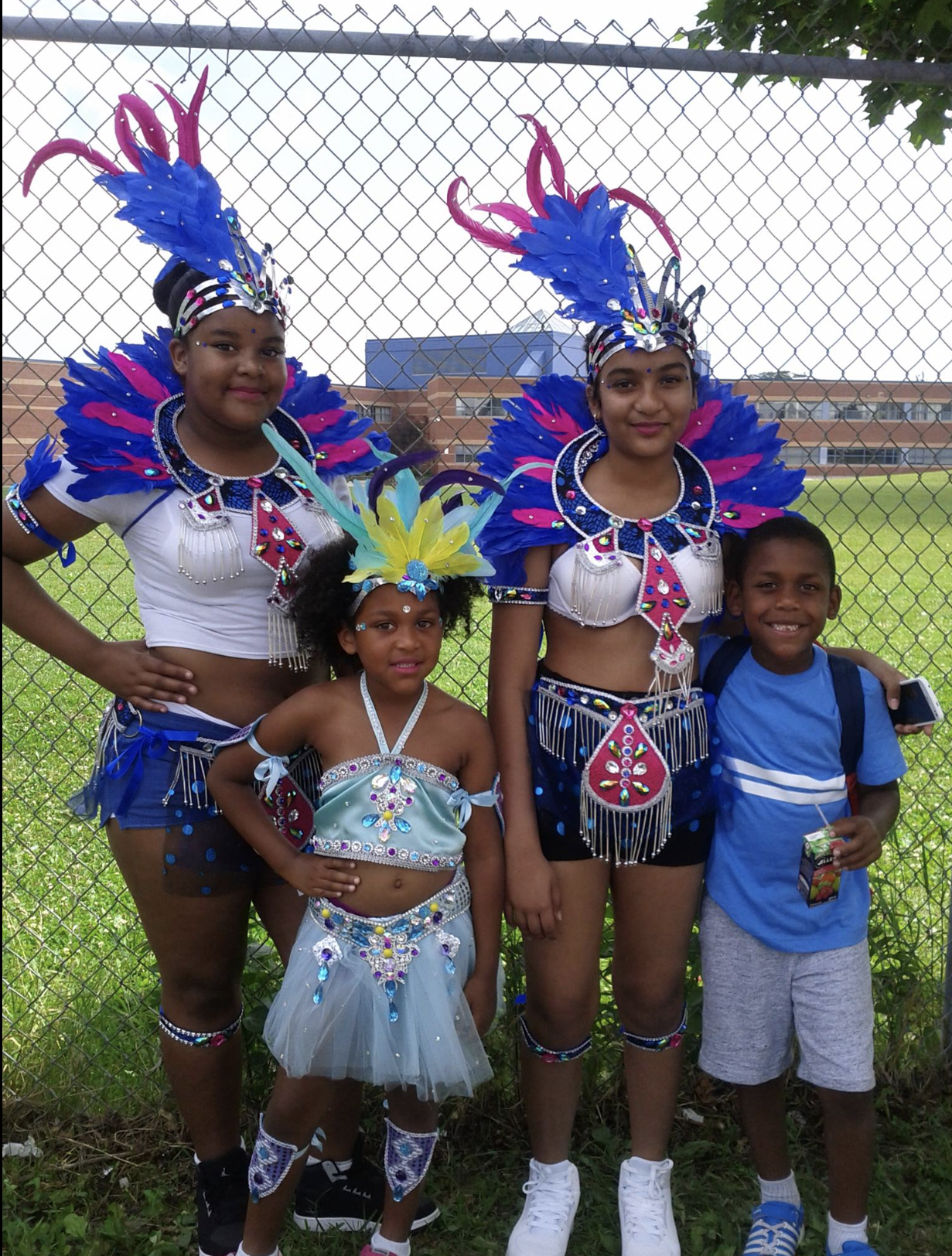
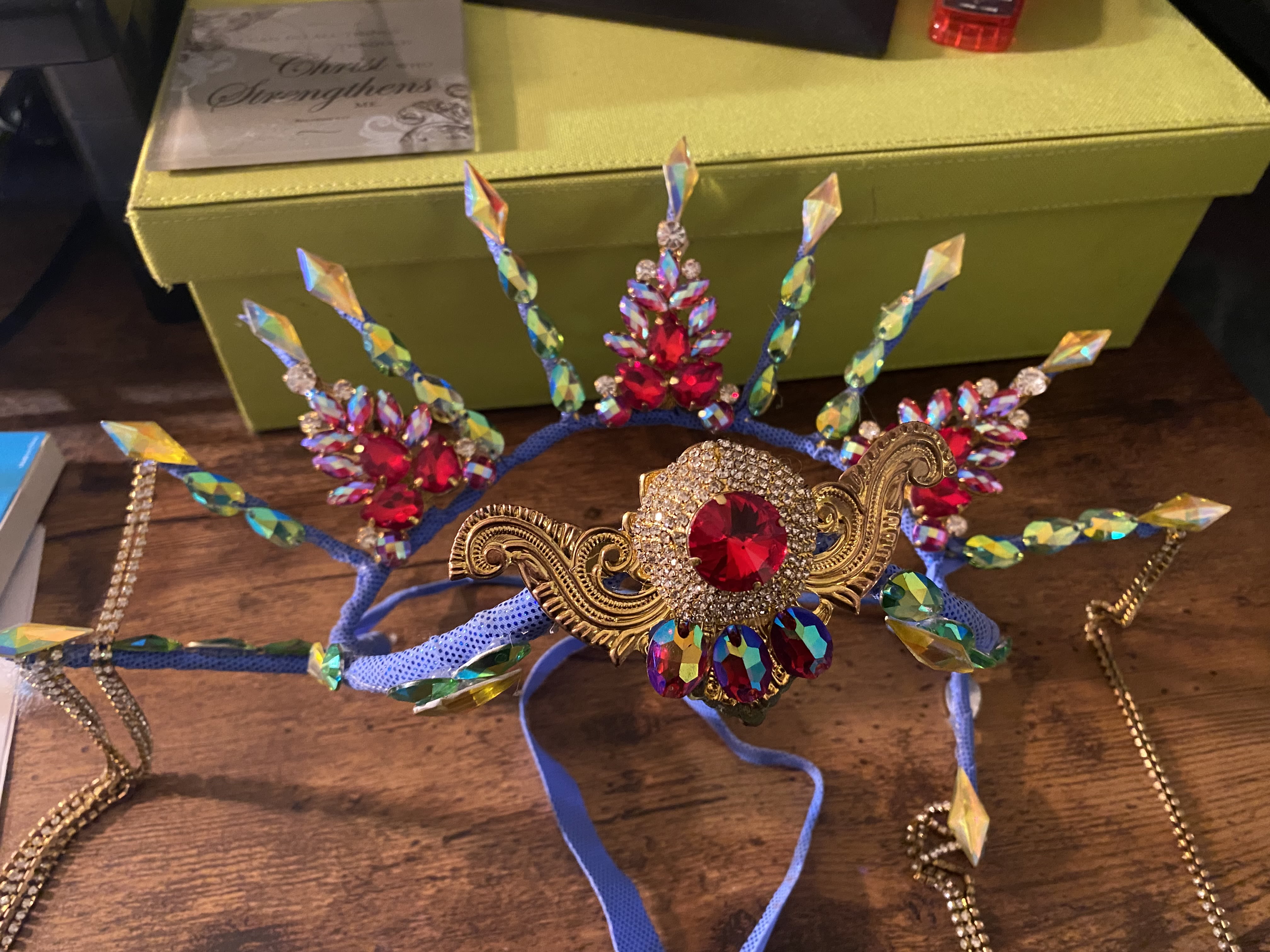
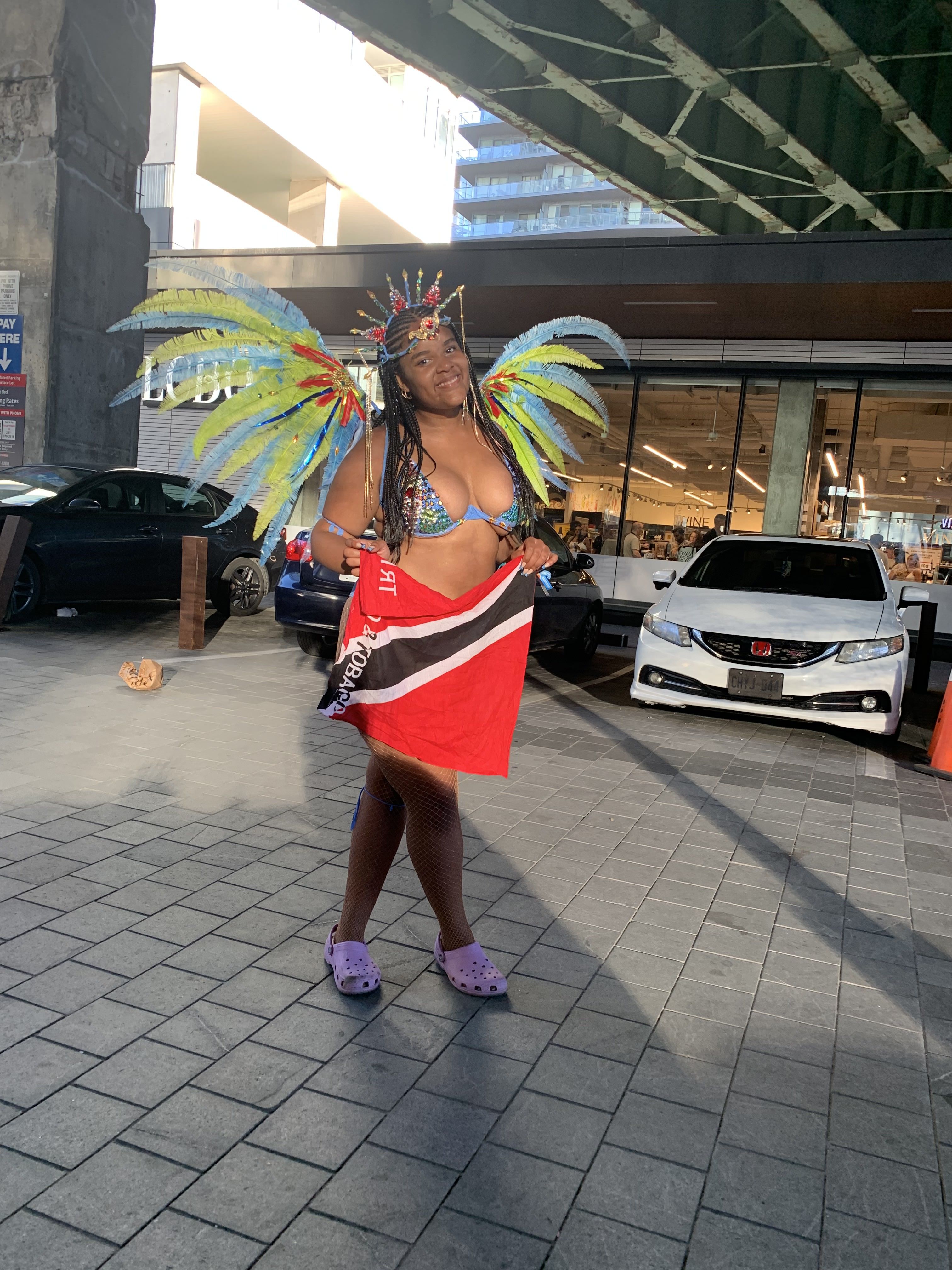

The Lochan family posing for a picture in their kiddies carnival costumes on July. 31, 2010., in Toronto. (Masahda Lochan-Aristide/TMU)
The Lochan family posing for a picture in their kiddies carnival costumes on July. 31, 2010., in Toronto. (Masahda Lochan-Aristide/TMU)

Photograph of Masahda Lochan-Aristide, Amila Bandoula, Makeda Lochan and Makhai Lochan at Kiddies Carnival on July. 19, 2014., in Toronto. (Masahda Lochan-Aristide/TMU)
Photograph of Masahda Lochan-Aristide, Amila Bandoula, Makeda Lochan and Makhai Lochan at Kiddies Carnival on July. 19, 2014., in Toronto. (Masahda Lochan-Aristide/TMU)

Jewelled crown headpiece from the Tribal Carnival mas band. This headpiece was apart of the Shanghai section in Caribana on July. 31, 2022. in Toronto. (Masahda Lochan-Aristide / TMU)
Jewelled crown headpiece from the Tribal Carnival mas band. This headpiece was apart of the Shanghai section in Caribana on July. 31, 2022. in Toronto. (Masahda Lochan-Aristide / TMU)

Masahda Lochan-Aristide in costume on Caribana day. The costume features red yellow and blue designs worn on July. 31, 2022. in Toronto. (Masahda Lochan-Aristide / TMU)
Masahda Lochan-Aristide in costume on Caribana day. The costume features red yellow and blue designs worn on July. 31, 2022. in Toronto. (Masahda Lochan-Aristide / TMU)
The History

Despite the cultural significance of this celebration to those of Caribbean heritage, at first glance the parade might look like an extravagant street party where women flaunt their figures, and the revelry seems to never end. But the origins of the parade are rooted in so much more.
Let's go back to the 18th century, when thousands of West Africans were brought involuntarily to the island of Trinidad and Tobago, sold to plantation owners as slaves. These people were stripped of their freedom in more ways than one. However, out of this oppression grew a new found culture of folklore, song and dance, according to historian Micheal La Rose, author of “The City Could Burn Down, We Jammin’ Still!”
Following the emancipation of slaves in Trinidad on Aug.1,1838., riots began pressuring the government to grant freedoms and rights to the once enslaved. These riots were filled with Trinidadians in masquerade, covered in colourful powders, drums and tambourines. Bottles and spoons were used during the riots to create loud exuberant sounds as a symbol of defiance, according to Milla Cozart Riggio, author of “Carnival : Culture in Action - the Trinidad Experience”.
This started a tradition symbolizing the freedom and defiance of these once enslaved people, a homage to their struggle and a celebration of their independence.
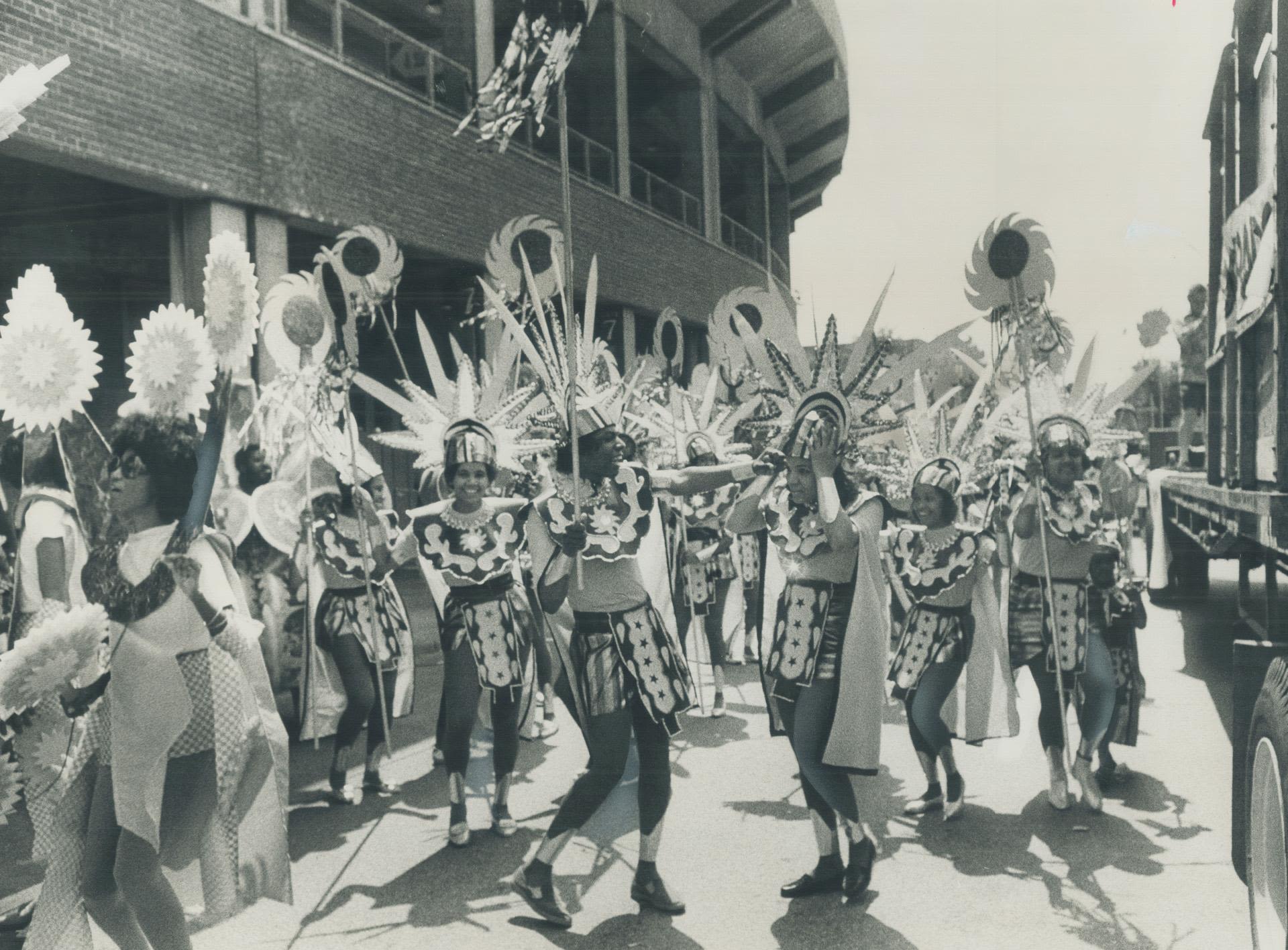


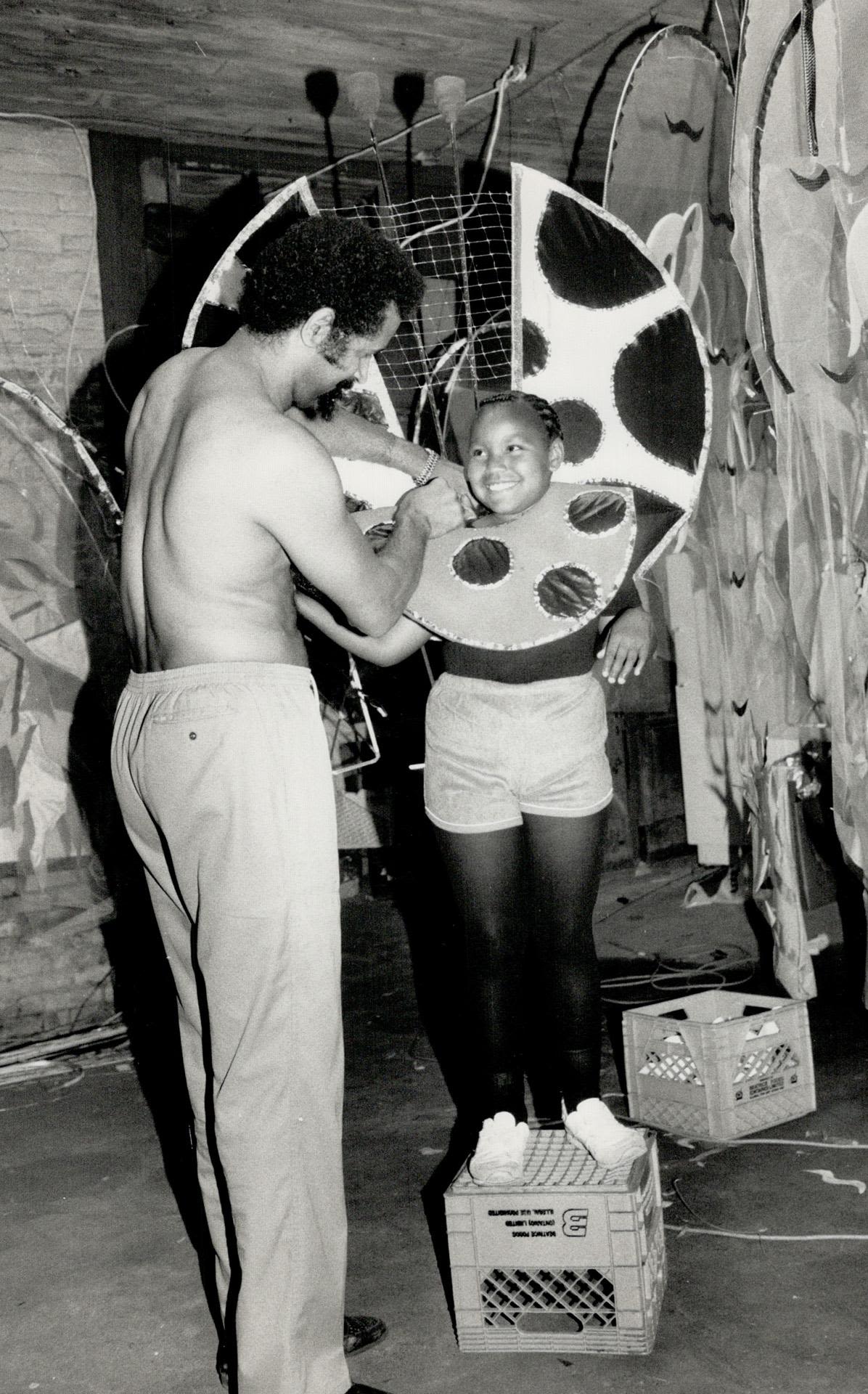
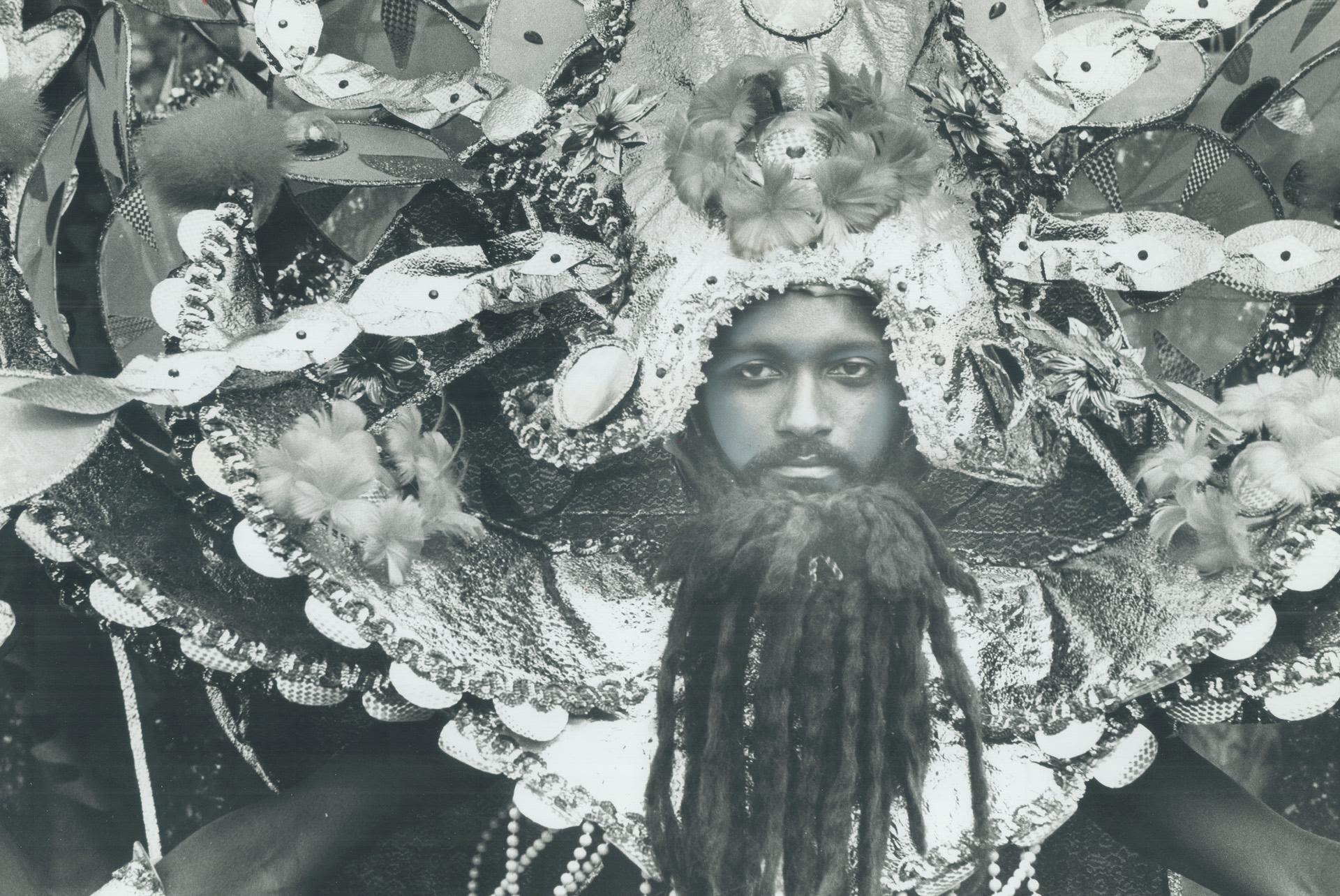


Archival photo of the Toronto Caribbean Carnival on Aug. 1 ,1971., in Toronto. (Jeff Goode/Toronto Sun)
Archival photo of the Toronto Caribbean Carnival on Aug. 1 ,1971., in Toronto. (Jeff Goode/Toronto Sun)

Archival photo of the Toronto Caribbean Carnival on Aug. 1, 1980 in Toronto. (Fred Ross/ Toronto Sun)
Archival photo of the Toronto Caribbean Carnival on Aug. 1, 1980 in Toronto. (Fred Ross/ Toronto Sun)

Archival photo of over 10,000 people in attendance at the Toronto Caribbean Carnival on Aug. 6, 2022., in Toronto. (Bob Olsen/Toronto Sun)
Archival photo of over 10,000 people in attendance at the Toronto Caribbean Carnival on Aug. 6, 2022., in Toronto. (Bob Olsen/Toronto Sun)

Whitfield Belasco fixing the costume for young model for the Kiddies Carnival parade on June. 27, 1988 in Toronto. (Doug Griffin/ Toronto Sun)
Whitfield Belasco fixing the costume for young model for the Kiddies Carnival parade on June. 27, 1988 in Toronto. (Doug Griffin/ Toronto Sun)

Carnival goer dressed in full costume on July. 31, 1977., in Toronto. (Boris Spremo/ Toronto Sun)
Carnival goer dressed in full costume on July. 31, 1977., in Toronto. (Boris Spremo/ Toronto Sun)

Costume designer Arnold Hughes and family creating costume for Caribana on July. 14, 2022. in Toronto. (Ken Faught/Toronto Sun)
Costume designer Arnold Hughes and family creating costume for Caribana on July. 14, 2022. in Toronto. (Ken Faught/Toronto Sun)
Moving forward to the mass immigration of Caribbean’s to Toronto, where according to James W. St. G Walker member of the Canadian Historical Foundation and author of “The West Indians in Canada,” between the 1950s and 1980s Caribbean population in Canada rose from 10,000 to 200,000. And with it, an influx of culture and creativity, developed into what we know today as the Toronto Caribbean Carnival.
At the heart of this grand parade are the band leaders who design, and curate the costumes worn on Caribana day. These creatives pull from their own knowledge and connection to the history of the carnival. The elaborate costumes created are viewed as “extensions of their own ancestral ties to the carnival,” said world renowned band leader of Carnival Nationz and costume designer, Marcus Eustace.

Marcus Eustace at his mas camp working on a carnival headpiece on July.20, 2022 in Toronto. (Photo courtesy of Marcus Eustace)
Marcus Eustace at his mas camp working on a carnival headpiece on July.20, 2022 in Toronto. (Photo courtesy of Marcus Eustace)
The Younger generation of Caribbean creatives like Seusahai, are using the culture as means of “expression,” and a connection to their heritage, said Seusahai. Her work as the band leader for Tribal carnival and street wear collection Cee The Collection are all extensions of her love and commitment to carnival.
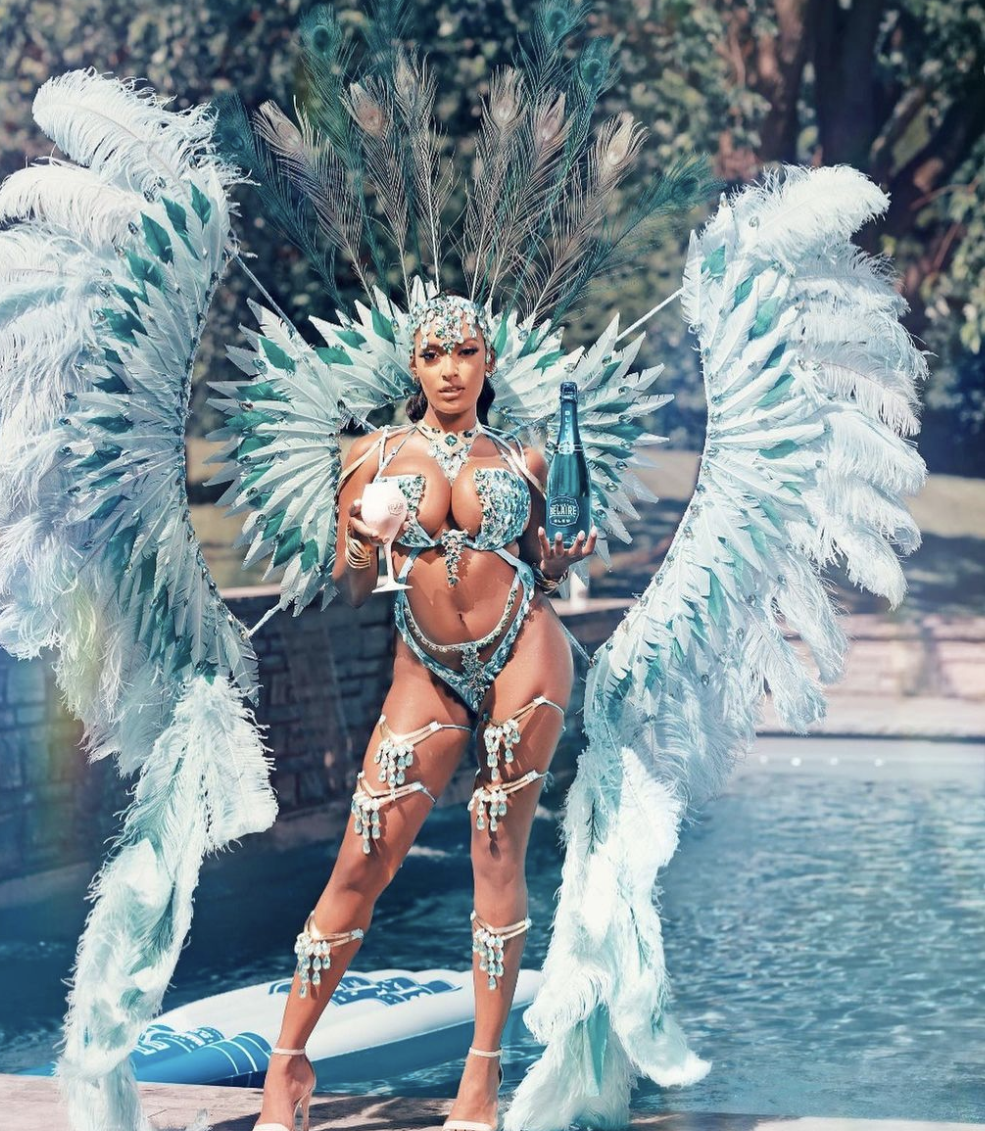


Celena Modelling her own creation for Tribal carnival on July. 9, 2022. in Toronto (Photo courtesy of Celena Seusahai)
Celena Modelling her own creation for Tribal carnival on July. 9, 2022. in Toronto (Photo courtesy of Celena Seusahai)

Celena Seusahai modelling the front line costume for Tribal Carnival on April. 30, 2022. in Toronto (Photo courtesy of Celena Seusahai)
Celena Seusahai modelling the front line costume for Tribal Carnival on April. 30, 2022. in Toronto (Photo courtesy of Celena Seusahai)
Toronto, otherwise known as a melting pot of culture, has allowed the carnival to develop past the parade. Where young creators are using the culture of the parade to create art in different ways.
Justin Baird, a carnival costume designer uses his heritage and connection to the culture to inspire his drag superstar persona Kimora Amour, who appeared on the third season of RuPaul’s Canadian Drag Race.
Since Baird was a child, he has participated in the curation of carnival, using materials to create elaborate costumes. His upbringing revolved around using his culture for creative expression, and now as an adult it has defined him and his work.
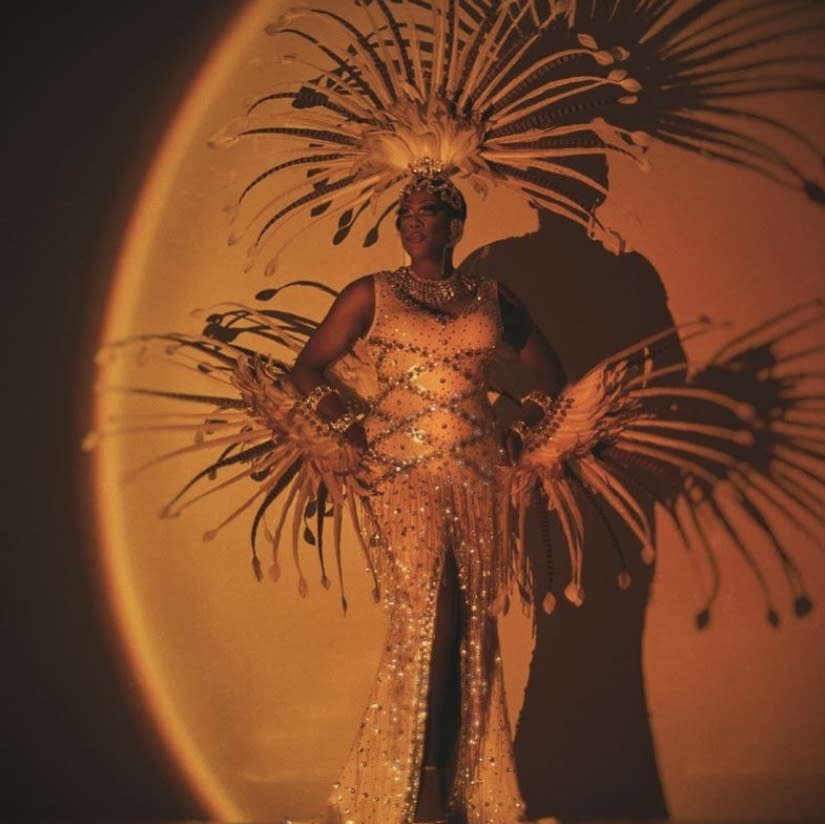
Drag superstar Kimora Amour modelling her own creation for RuPaul's Canadian Drag Race. The feathered pieces created by Celena Seusahai apart of Cee the Collection in Toronto on Nov. 21, 2022. (Photo courtesy of Justin Baird)
Drag superstar Kimora Amour modelling her own creation for RuPaul's Canadian Drag Race. The feathered pieces created by Celena Seusahai apart of Cee the Collection in Toronto on Nov. 21, 2022. (Photo courtesy of Justin Baird)
Using his knowledge and passion for the art behind carnival, Baird created his drag persona Kimora Amour to embody carnival in a modern and exciting way.
Justin Baird speaking about his inspiration for his drag persona Kimora Amour on Nov. 6, 2022 with interviewer Masahda Lochan-Aristide. (TMU/Masahda Lochan-Aristide)
Justin Baird speaking about his inspiration for his drag persona Kimora Amour on Nov. 6, 2022 with interviewer Masahda Lochan-Aristide. (TMU/Masahda Lochan-Aristide)
Beyond his love for performance and the make up of the costumes, Baird uses his platform and personal connection to carnival to educate audiences on the history of carnival and its roots in emancipation. “ Being able to live in my truth, my culture, being able to deliver history, I think is what I'm strong at, and I love being able to use my drag to do it,” said Baird.
As carnival continues to gain popularity amongst mainstream audiences, often the depth of the craft gets lost in the social media shuffle. In an effort to continue educating people on the culture behind the costumes, Zaynna Beckford, social media content creator, uses her platform to showcase how carnival costumes can be incorporated into everyday street wear.
Zaynna Beckford showcases her previous costumes and how she reworks them into trendy outfits. Beckford's goal is to showcase the craft of carnival while putting a twist on their use in Toronto on Aug. 13 , 2022. (Courtesy of Zaynna Beckford)
“ I take carnival and try to make it into everyday life. A lot of my following is people asking where I get my pieces from and how carnival works, and I feel like my content allows me to incorporate carnival in a mainstream way, where I can still educate people on what it is,” said Beckford in a Zoom interview.
Tiktok video of Zaynna Beckford modelling her previous costumes. Beckford manipulates her costumes into modern day fashion in Toronto on Sept. 11, 2022.
Utilizing the versatility of the costumes in carnival, Seusahai uses her intensive knowledge of costume design to also merge streetwear fashion and carnival. As the CEO of her own brand Cee the Collection, Seusahai hand makes each piece, intricately placing each rhinestone to fashion a new design each time.
“I really want to incorporate carnival wear, wire bras, and crowns into everyday fashion. People are already doing it, but not necessarily people of Caribbean descent.” Seusahai’s first priority for her brand is to educate people on the culture, her collection is one of the many ways she does this. “My brand is an educational business, where I can show that there is a purpose behind it,” added Seusahai.
Hand made wire bra by Celena Seusahai as part of her brand Cee the Collection. Seusahai creates each piece as a way to merge culture and fashion in Toronto on Oct. 4, 2022. (Courtesy of Celena Seusahai)
Hand made wire bra by Celena Seusahai as part of her brand Cee the Collection. Seusahai creates each piece as a way to merge culture and fashion in Toronto on Oct. 4, 2022. (Courtesy of Celena Seusahai)

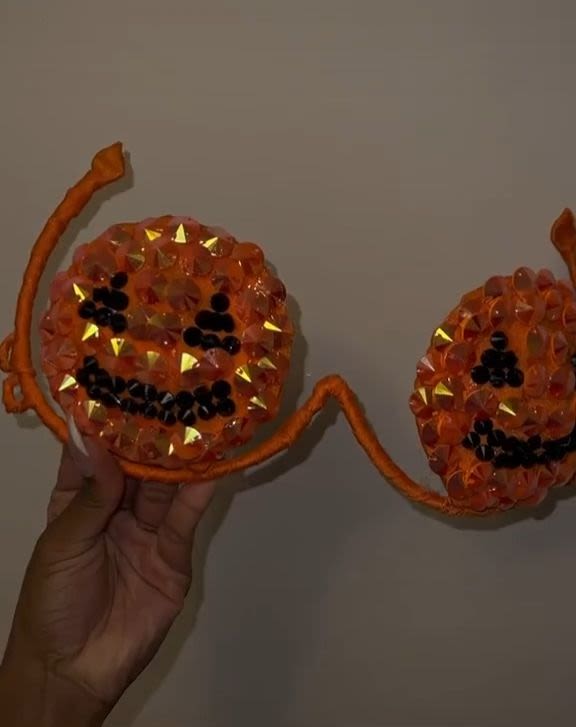




The frame of a wire bra before it is designed. Celena Seusahai, creates trendy wire bras for customers from her collection in Toronto on Oct. 30, 2022. (Courtesy of Celena Seusahai)
The frame of a wire bra before it is designed. Celena Seusahai, creates trendy wire bras for customers from her collection in Toronto on Oct. 30, 2022. (Courtesy of Celena Seusahai)
Final completed design custom created for halloween. Celena Seusahai personally designs and decorates each piece by hand in Toronto on Oct. 30, 2022.
Final completed design custom created for halloween. Celena Seusahai personally designs and decorates each piece by hand in Toronto on Oct. 30, 2022.
The frame of a wire bra before it is designed. Celena Seusahai creates fashionable wire bras for customers from her brand Cee the Collection in Toronto on Feb. 7, 2022. (Courtesy of Celena Seusahai)
The frame of a wire bra before it is designed. Celena Seusahai creates fashionable wire bras for customers from her brand Cee the Collection in Toronto on Feb. 7, 2022. (Courtesy of Celena Seusahai)
Completed bra design hand made by Celena Seusahai. Cee the Collection is focused on fashion and education surrounding traditional carnival wear in Toronto on Feb. 7, 2022. (Courtesy of Celena Seusahai)
Completed bra design hand made by Celena Seusahai. Cee the Collection is focused on fashion and education surrounding traditional carnival wear in Toronto on Feb. 7, 2022. (Courtesy of Celena Seusahai)
Frame of a wire bra for a new custom design by Cee the Collection, hand made by Celena Seusahai in Toronto on Sept. 16, 2022.
Frame of a wire bra for a new custom design by Cee the Collection, hand made by Celena Seusahai in Toronto on Sept. 16, 2022.
Cee the Collection pieces are all custom and one of a kindCompleted handcrafted bra made by Celena Seusahai in Toronto on Sept. 12, 2022.
Cee the Collection pieces are all custom and one of a kindCompleted handcrafted bra made by Celena Seusahai in Toronto on Sept. 12, 2022.
The excitement of this parade not only attracts people in awe of the bright colours and festive music, but also over 100,000 people in tourism, said Laverne Garcia, executive chairman of the board for the FMC.
“We bring well over a couple hundred thousand tourists into the city every year, and when people come, they spend, they stay in hotels, eat in restaurants, they come to take part in the festivities.”
For small businesses this influx of tourism is most beneficial, financially, and socially. “All of this tourism is a benefit to the city and to the people who have their business in the area,” added Garcia.
These economic factors that enhance the impact of the carnival have led to a million dollar investment from the government for the return of Carnival this previous year, according to a news release by the Federal Economic Development Agency for Southern Ontario.
“The Honourable Chrystia Freeland, Deputy Prime Minister and Minister of Finance, announced an investment of $1 million for the operators of the Toronto Caribbean Carnival, the Festival Management Committee, to modernize the event, expand offerings and enhance visitor experience,” stated the release.
And while the economic impacts of the festival are significant, it is the cultural implications of the festival that is the true representation of the diversity within the city.
“I can't even really begin to explain how huge this festival is. It's a cultural institution, it provides a very important piece that connects us all to emancipation, and it's our way of celebrating each other,” said Chrichton.
Beyond the parade, carnival offers lessons to those willing to learn its origins and significance for Caribbeans. The opportunity to participate in the festival from childhood to adulthood has played a key role in my own connection with my culture. For young kids of Caribbean descent who don't have the same opportunity I had growing up, Seusahai plans to bring workshops surrounding the history of the carnival and how to make costumes to schools in the Toronto District School Board.
For young kids of Caribbean descent who don't have the same opportunity I had growing up, Seusahai plans to bring workshops surrounding the history of the carnival and how to make costumes to schools in the Toronto District School Board.
“ We’re planning black history month workshops throughout TDSB schools, we’ll be doing assemblies, and running a four-week program teaching kids about the culture and giving them the chance to participate in craft workshops,” said Seusahai.
This culture offers anyone who has the curiosity to learn a world of innovation, creativity, and history.
Beyond the parade there is more to uncover about what it means to be a masquerader, what it means to create costumes and what it means to curate culture.